Why Your Employees Are Still Stressed And Burned Out And What You Can Do About It
Ever wondered why your mental health workshops don’t seem to make much difference? I commonly hear from HR directors that their expensive mental health strategy just. isn’t. working. Over 53% of organisations have a mental wellbeing strategy. Yet absence due to mental health is the highest it has ever been (CIPD, 2024). People are still sick, absent and burned out. In this blog post, we will explore why, if culture is not addressed, this will continue despite your expensive EAP programme and why investment in line managers could be the answer.

Going beyond mental health workshops: What is organisational culture and why does it matter?
Organisational culture can be defined as the consistent behavioural patterns and shared beliefs of an organisation. Every organisation has a unique culture that is formed through a combination of societal influences, industry influences, institutional influences and the development of the firm itself.
Culture can promote or undermine your mental health strategy. For example, an organisation with a strong culture of inclusivity that is infused through shared beliefs and practices will most likely adopt new parental leave or flexible working policies consistently and effectively and it will be intuitive to managers to handle absence with compassion and diligence. However, an organisation whose culture has historically been about “survival of the fittest” and practices such as long hours and after-work networking will struggle to consistently implement a new well-being strategy.
The culture of a business is often considered challenging to address but the cultural web model developed by Johnson and Scholes (1992) has been found to help usefully plan and facilitate change across diverse settings (Cooper et al, 2019; Macdonald et al. 2013; Freemantle et al. 2013).
Why training for line managers is so important
At the inception of a new well-being strategy, executives should ideally use the cultural web to plan the changes necessary to embed the new policies. In fact, many consultancy firms will map this out with executive teams. However, the actual execution of that change is often the missing piece of the strategic puzzle. Managers on the ground often do not fully understand the strategy and may not feel skilled to implement it. This explains the consistent research findings that line manager training is found to be one of the most successful ways of making a real impact on mental health in organisations (read the recent CIPD summary of the evidence here).
Line managers are critical to the success or failure of strategy. They can be powerful conduits for cultural change or they can block the strategy from ever disseminating through the ranks. In the majority of organisations, they are the people responsible for managing absence and implementation of flexible working and parental leave policies. How these are handled is crucial to your well-being strategy.
In this blog, I will use the elements of the cultural web to show you how culture may be enabling or blocking the successful implementation of your mental well-being policies. I will also give some ideas for how line management training can help ensure smooth, consistent and impactful adoption of your well-being strategy and policies.
How the cultural web can help line managers implement well-being strategy
Stories
- “No one leaves before the boss”
- “INSERT NAME OF WHITE MAN” is a legend, if you want to succeed around here you have to do it like him”
- “The real work happens at drinks after work”
- “Flexible working = slacking”
- “Women value work less after having a baby”
- “Mental health is weakness”
- “We work hard and we play hard”
Recognise any of those? Every organisation has stories, some big and some small. They help us make sense of the environment and develop a sense of identity as a company. Some of them will be very positive and others will make it very hard for people to utilise your wellbeing policies fully. For example, if there is a story in the organisation that mental health struggles mean weakness how likely is someone returning to work after maternity leave to tell their manager that they struggled with postnatal depression? In addition, if the organisation holds negative stories about flexible or part-time work and positive stories of “work-hard, play-hard legends” how valued is someone using the flexible working policy going to feel?
In order to create a culture where employees use the support available to them, line managers need to be aware of these stories and comfortable naming them with employees who may be negatively impacted. This takes the kind of skilful and compassionate communication that we teach through our KIND framework for talking about mental health.
Symbols
Symbols are the powerful objects and words that communicate culture implicitly. There are some obvious ones. I probably don’t need to spell out the symbolic inference from having to pump breastmilk in a toilet or converted cupboard. Similarly, the position of someone’s desk and their title are symbols of their value to the organisation. But there are less obvious things too. If your corporate identity and branding is aggressive yet wellbeing is at the heart of your corporate strategy, you have an alignment problem that will stymie your attempts to improve mental health.
Some of these symbols can only be influenced at the executive level but many of them can be influenced by thoughtful line managers. Part of the role of the manager is to champion the needs of their team and to predict the likely impact of decisions on their team members. Line manager training therefore needs to equip them with an understanding of the power of symbols so they can take action or advocate for team members where necessary. This will help create a culture where people feel valued, a large part of job satisfaction and well-being.
Rituals and routines
Are there things “we do around here” that a pregnant employee or one returning from maternity or paternity leave can’t engage in? Is there a culture of presenteeism that does not fit with flexible working? Are there regular late-night socials that exclude those with responsibilities and/or the non-drinkers? Are you publicly celebrating achievements such as “100% attendance” that accidentally discriminate against those with caring responsibilities? Feeling excluded from the culture impacts on mental well-being and job satisfaction. A skilled line manager must be able to recognise when the rituals and routines of the workplace are excluding or causing distress to a team member. They should feel confident to name this with the employee and work with the team to develop more inclusive behaviours.
Power structures
Do line managers feel empowered to utilise the mental health provisions that are available for their team? Are they concerned that there may be unofficial repercussions for the employee if they do such as loss of status? Is there a culture of nepotism or reliance on personal networks that means those with responsibilities or using flexible working policies struggle to gain progression and influence in the organisation? Line managers must feel confident that policy matches reality.
Organisational structures
How well is your wellbeing strategy communicated? Is the way it aligns with other business goals clear to all managers or does it seem jarring? When there is a lack of strategic alignment mental health can seem like a “bolt on” that is there simply to “well-being wash” the organisation rather than to effect real change in the business. This is strange given the evidence of its impact on the bottom line of a business (see our white paper for more on that.) If managers and employees cannot see the alignment between the mental health policies and the strategy of the business they will not feel safe or motivated to use them. Simply communicating this link clearly to line managers can improve the consistent use of your well-being policies.
Control systems
What gets measured usually gets done. Do you have metrics for the well-being aspect of your corporate strategy? Are there any KPIs that could actually be in conflict with some of your wellbeing policies. For example, if there is a target to bring everyone back into the office 3 days per week but you are offering more flexibility to parents how is this apparent conflict communicated? Are your policies clear and easy for employees to remember? Even in some highly well-being-motivated organisations line managers tell me they are not confident to use policies because they don’t really understand them. Are you providing adequate training for everyone to implement your strategy in a consistent way?
Let us help you
The good news? If you already have a well-being strategy in place, line managers can successfully influence culture. It takes time, adequate investment in training and the will of the executive but companies that can do this successfully will reap the productivity benefits that come from a happy and healthy workforce. That is why companies like Bloomsbury PLC have been investing in our line managers’ training this month.
If your line managers could use some support in any of the areas above contact me (Dr Rosie, Founder and Clinical Lead at Know Your Mind) to talk about the training and coaching we can offer to your line managers.
Find out more about the work we do here.
Book a free consultation to discuss how we can help your organisation.


